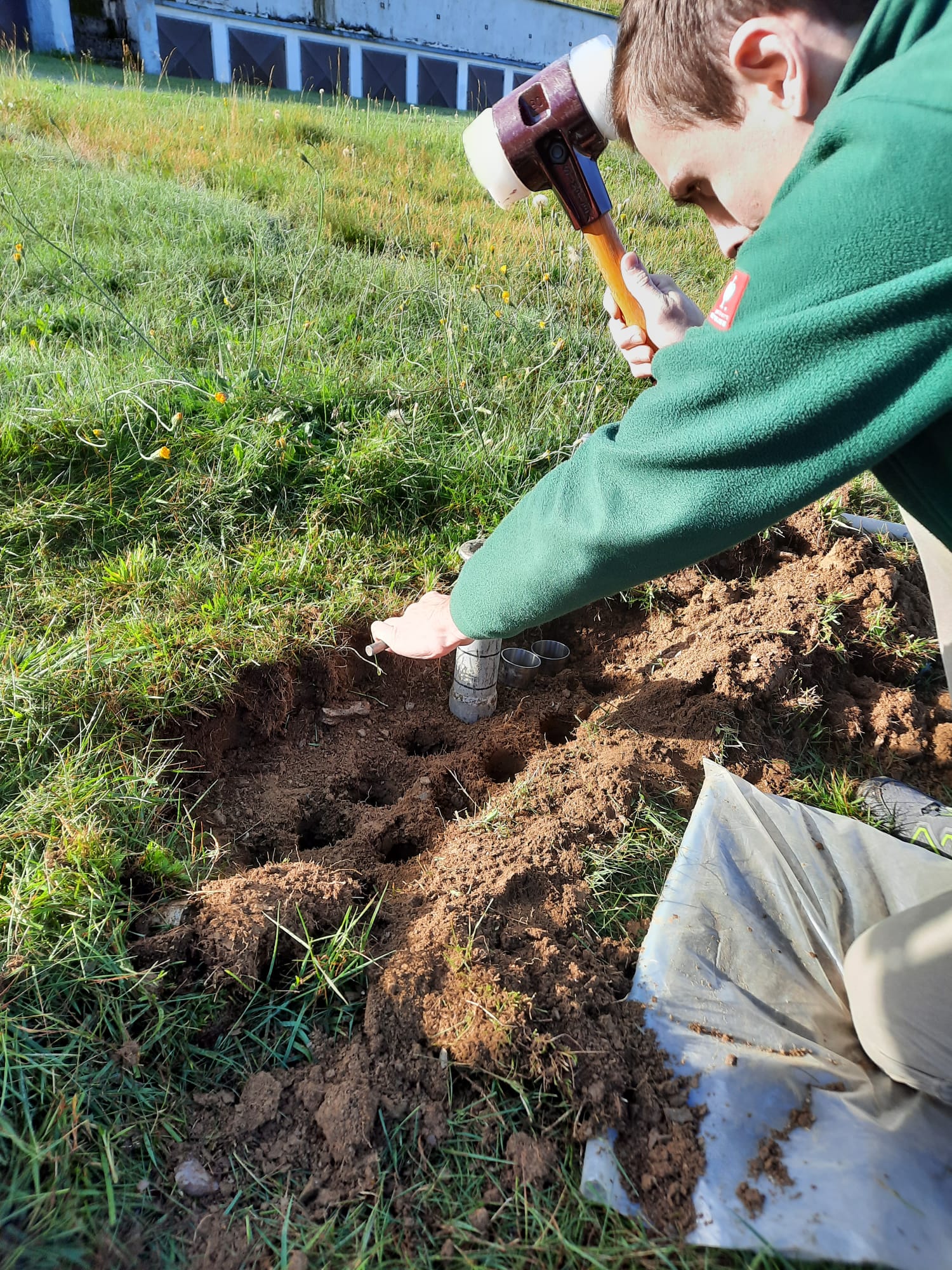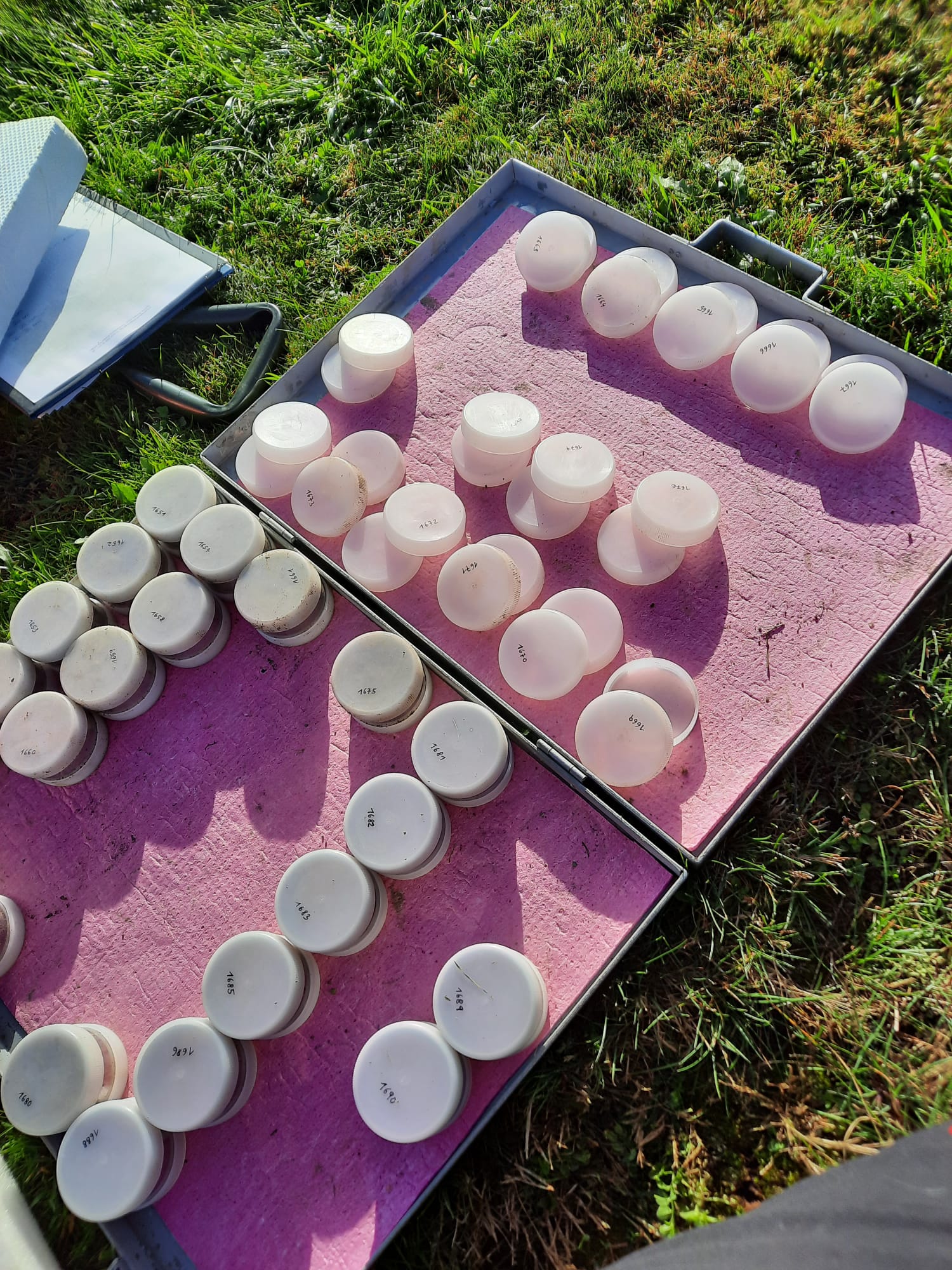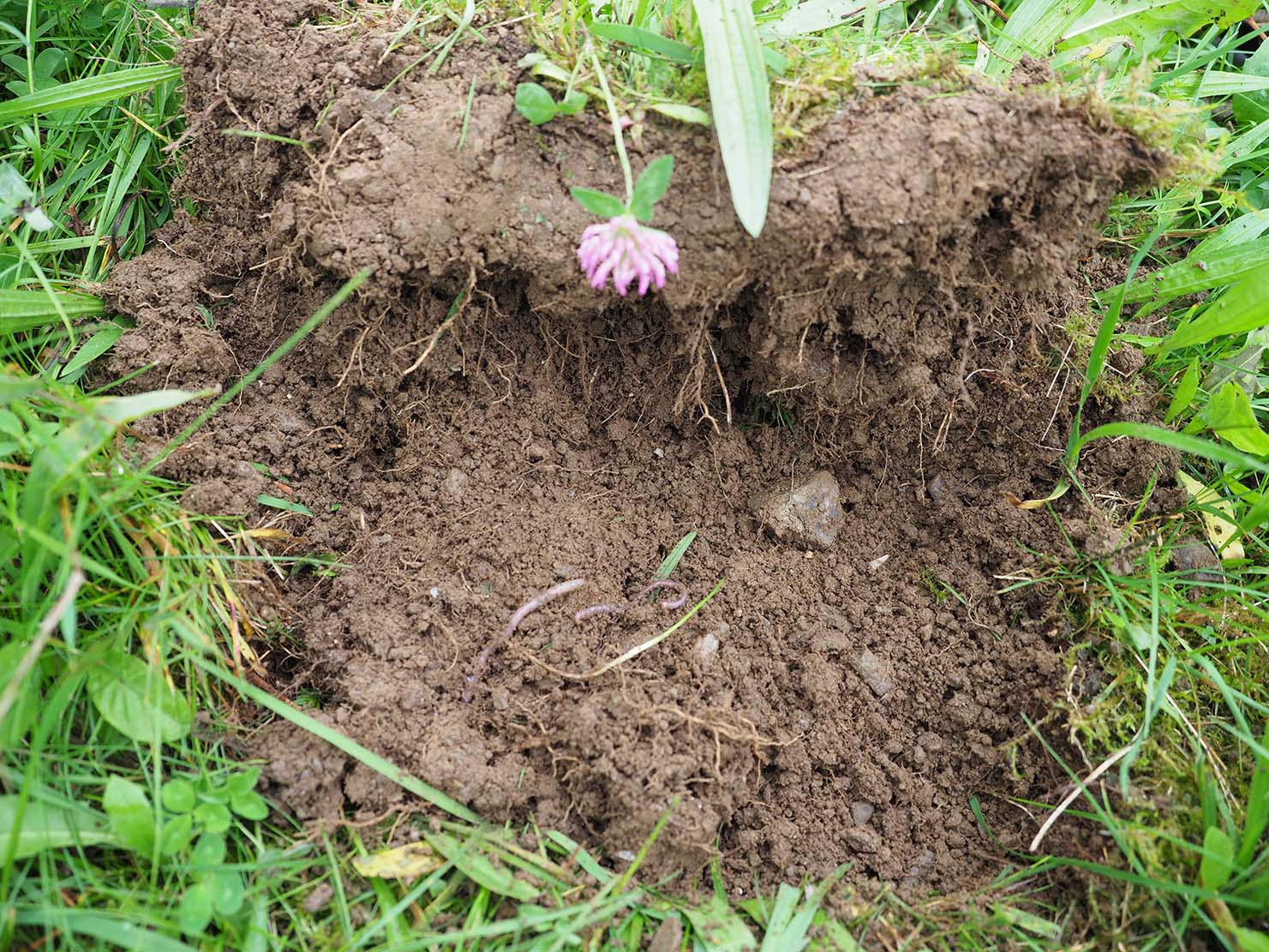One of the main problems in Austrian grassland management is the increasing soil compaction that occurs over large areas. In order for plants to grow well in grassland, they need loose, well-aerated soil. The use of ever larger and heavier machines and equipment in agriculture promotes negative effects that are not good for the soil. A dense soil reduces soil fertility, the soil pores are compressed, waterlogging occurs and the diversity of soil organisms is reduced.
There is also no space for soil animals and roots, which means that many plants only have superficial roots. The result is susceptibility to drought. Waterlogging due to soil compaction has the result that degradation processes are inhibited and the soil organisms lack oxygen to convert nutrients into the soil. It is assumed that metabolic processes in the absence of air produce nitrous oxide (N 2 O) and methane (CH 4 ), which contribute to global warming.

There are a variety of soil physical parameters used to determine soil compaction. A frequently used measurement is the storage density. The storage density as a measure of soil compaction is determined by undisturbed sampling using sampling cylinders. In late autumn this year, the storage density was examined on a large number of plots with different cultivation frequencies and different fertilizer regimes. For this purpose, each soil layer was sampled to a depth of 30 cm or 50 cm in increments of 5 cm. The storage density is essential for calculating carbon and nutrient reserves in the soil.
Project : CASAS (project supported by the Climate and Energy Fund)
Ongoing diploma thesis: Sebastian Wieser – Influences of organic and mineral fertilizers on various soil carbon pools in permanent grassland









